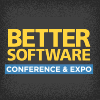Better Software Conference & EXPO 2006

PRESENTATIONS
|
Risk Managment on an Agile Project
Plan-driven software project management is very specific on how to identify and manage risks. When moving to Agile software development practices, what happens to all the risk management activities that project managers used to oversee? Contrary to what many expect, there are Agile risk management practices that reduce risk by providing opportunities for the team to identify, monitor, and control risk events. |
|
|
Sarbanes and Oxley: Your New Partners in Software Development
Determining whether legal and contractual issues apply to your development efforts isn't always simple. There may be some obvious factors: a well-regulated industry, service level agreements, or state or federal agency oversight. However, other factors may not be so obvious. The new Sarbanes-Oxley Act is largely legally untested, subjecting your company to unknown legal issues. You have an eCommerce site that stores credit card information. Your portal collects personal information. You produce proprietary software ... and more. |
|
|
Smoke Tests to Signal Test Readiness
Plumbers use "smoke tests" to find leaks in pipes when it is impractical to completely seal a plumbing system. We use this term as a metaphor to define a small set of software tests designed to expose big problems instead of committing the resources to run a large suite of tests. Building a powerful smoke test suite is not trivial and not intuitive, requiring an understanding of the product, the test base, and test automation techniques. |
|
|
Software Metrics to Improve Release Management
In large organizations with multiple groups or multiple projects, developing consistent and useful metrics for release management is highly challenging. However, when targeted at specific release goals, metrics can help monitor the development schedule and provide both managers and developers with the data needed to improve quality. |
|
|
Successful Outsourcing with the Crawl-Walk-Run Strategy
Large organizations may have the resources for expensive, big-bang offshore outsourcing projects. But what should small- and medium-sized organizations do when tasked with outsourcing? Based on his experiences, Uttiya Dasgupta describes a usable and inexpensive process for planning an offshore outsourcing strategy for small- to medium-sized development organizations. This crawl-walk-run strategy starts with very small projects and moves to increasingly more complex ones, supported by adequate preparation for each stage. |
|
|
Successful Software Managment: Fifteen Lessons Learned
We normally think about process improvement as something applied to projects. But process improvement is also for people-and even for managers. Join Johanna Rothman as she shares lessons she's learned and management improvements she's made during her years in management. Like many other technical managers, Johanna became a manager by rising through the technical ranks. And, like many other managers, she had plenty of technical training and mentoring but had to learn management skills the hard way-through trial and error. |

Johanna Rothman, Rothman Consulting Group, Inc. |
|
Testing SOA Middleware: Automating What You Can't See
SOA projects employing Web services have multiple back-end integration points, volatile data, and no direct, visible user interface. Together, these factors make SOA applications complicated to test. Most companies opt for indirect manual testing because they see no other option. However, there is a light at the end of the tunnel. Using real-world case studies as examples, Jon Howarth reveals step-by-step the data driven model Wells Fargo employs to automate its SOA regression testing. |
|
|
Testing the Nth Release
Congratulations! Your team is entrusted with testing the next release of an excellent product, one your customers have depended on for years. How do you make sure the fifth, tenth, or even the fiftieth update release is as good or better than the first version? Mature products have their own testing issues, different from those faced with new products. |
|
|
The Complete Developer
With the global availability of talented development people there is a growing trend toward the commoditization of software development. No longer is it enough to simply be a developer with knowledge of specific languages or algorithms in order to maintain your competitive edge in the marketplace. To compete, you must become a complete developer-someone who can, for example, write some code in the morning and in the afternoon update the requirements Wiki with the results of the latest customer review meeting with your marketing team. |
|
|
The Power of Continous Integration with Automated Unit Tests
Better, faster, cheaper-the mantra of many software methodologies and tools. Can it ever be true? Illustrated with examples from Agitar Software's internal development process, Jeffrey Fredrick describes the psychological impact of rapid feedback and how it unleashes the best in people. Find out what continuous integration means in the real world and how it can be coupled with automated developer (unit) tests to reduce the number and cost of failures. |
|


